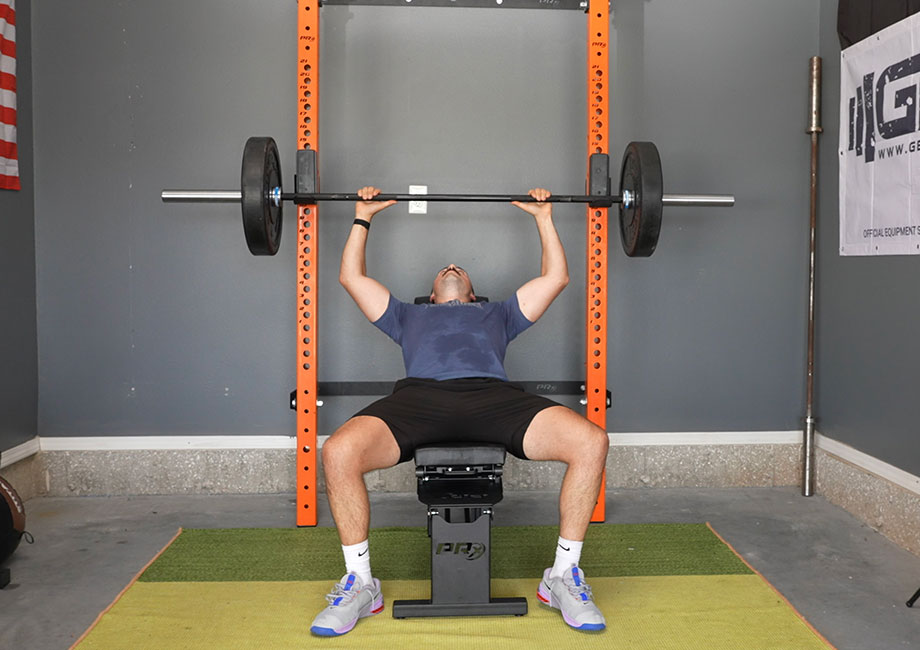We test and review fitness products based on an independent, multi-point methodology. If you use our links to purchase something, we may earn a commission. Read our disclosures.
There’s no denying the greatness of the barbell bench press, but we’re not inclined to do the same exercise every time chest day rolls around. Thankfully, there are loads of bench press variations, so you can basically have your (protein) cake and eat it, too. The incline barbell bench press is one such variation that effectively takes your tried-and-true flat bench press and puts it on an incline to increase the activation to the upper chest muscles.
RELATED: What Muscles Does the Bench Press Work?
Today, we’re getting top trainer tips on the incline bench from Caine Wilkes, OLY, USAW-L1, and GGR staff writer. He’ll provide steps for performing the incline bench press perfectly, common mistakes to avoid, benefits, variations, and more!
So, warm-up, rack up, and get ready to hit those pecs!
How to Do the Incline Barbell Bench Press
Muscles worked: Pectoralis major, pectoralis minor, serratus anterior, anterior deltoid, triceps
How to do it:
- Rack and load a barbell, set an adjustable bench to between a 30-degree and 45-degree angle, place it beneath the bar, and sit down.
- Grip the bar using an overhand grip that’s slightly wider than shoulder-width.
- Inhale, brace your core, pinch your shoulder blades together, and exhale as you unrack the bar. Hold it over your chest with your elbows fully extended.
- Inhale as you lower the bar towards your upper chest, lightly touching at the bottom.
- Pause, then exhale as you press the bar to the starting position.
- Repeat for reps then rerack before the next set.
RELATED: Best Powerlifting Barbell
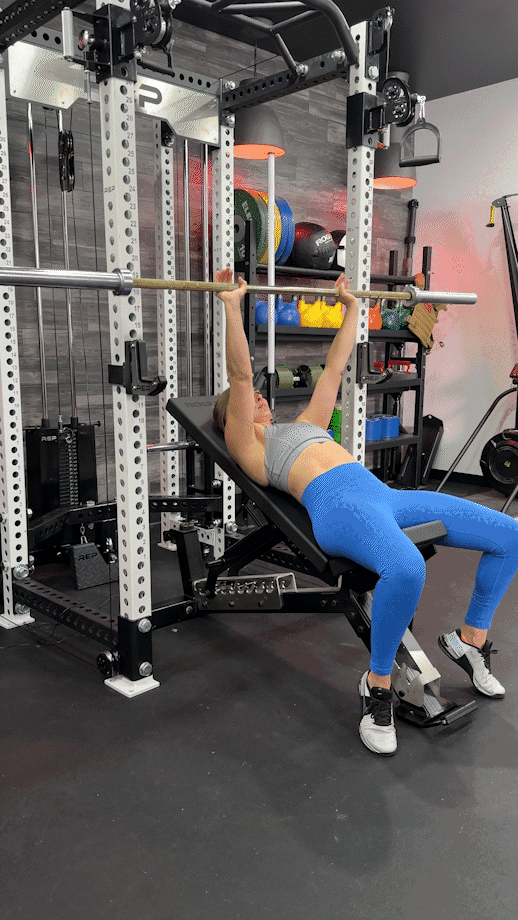
Trainer Tips for Form
There are few exercises as effective as the incline barbell bench press, but you’ll have to perform your reps with proper form to reap the most reward.
Get the Setup Right
You’re going to struggle from the start if you don’t set up properly. The correct setup grounds you in all the right places and helps maintain control during the concentric phase to generate the most force during the eccentric phase.
“You want to have your upper back and hips firmly pressed into the backpad of the bench and your feet planted to the floor,” says Caine Wilkes, OLY, USAW-L1. “Slightly arching the lower back may be beneficial at heavier weights, but don’t overdo it.”
RELATED: Best Weight Bench
Getting the correct grip is crucial, too. That’s because, to minimize your risk of injury and maximize the amount of power you can produce, you want your forearms vertically stacked beneath your wrists. Too wide or too narrow a grip angles your forearms, which could cause problems during the lift.
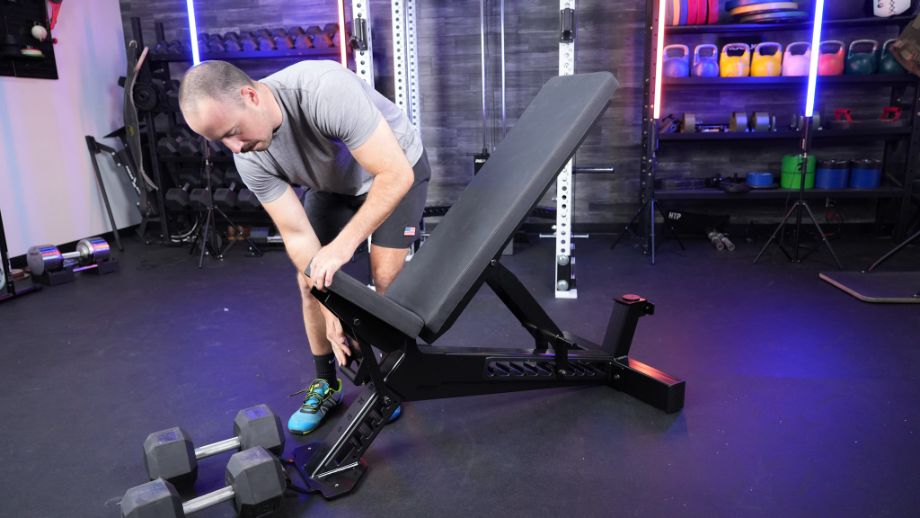
“The right grip width is approximately shoulder-width, but slightly inside or outside is safe and holds some benefits,” adds Caine “but, again, just don’t overdo it.”
Play It Straight
The ideal bar path is a perfect linear track from the starting position to your upper pecs, up and down, with as little front-to-back movement as possible.
“Wobbling around while holding or repping the bar is usually a sign you’ve gone too heavy,” Caine notes. “It’s fine for a final rep, but you shouldn’t be unracking the bar and immediately struggling to hold it steady.”
If you’re having trouble stabilizing the bar and maintaining a straight bar path, consider using lighter weights or even an unloaded barbell while you practice the proper form. It may seem silly, but it will pay dividends as you scale later on.
And don’t forget to grab a good spotter when pushing for a PR. Safety first, folks!
Control the Descent
Gravity will gladly do the work for you if you let it, but controlling the bar during the concentric phase maximizes your muscles’ time under tension. Studies show1 that time under tension (TUT) contributes to greater increases in strength and hypertrophy, meaning you’ll get more bang for your buck on each rep if you take your time.
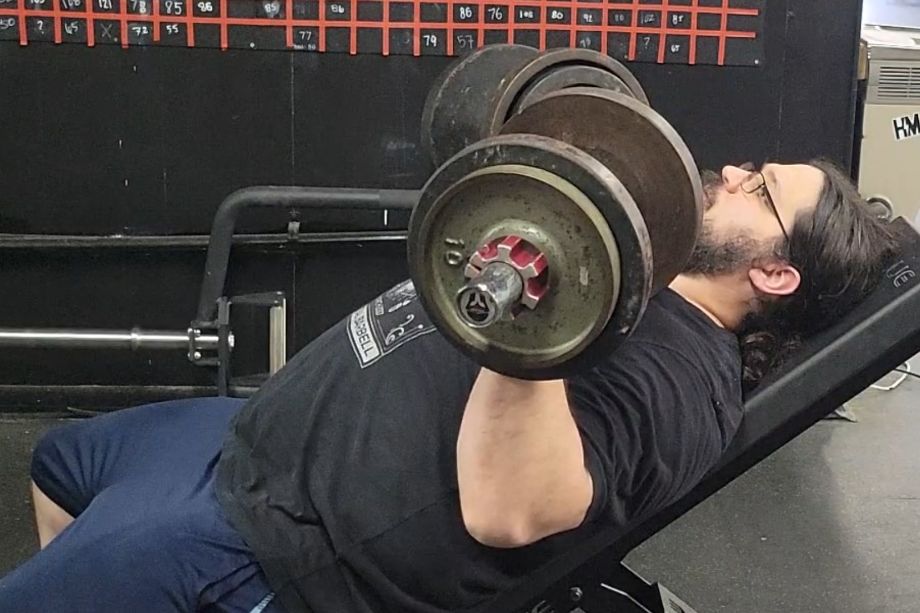
Not only is it worth it for the gains, but letting a heavy barbell come crashing down onto your sternum is far from pleasant. Be safe, be smart, and get those gains!
Incline Barbell Bench Press Benefits
The bench press reigns supreme in the weight room, but what about the incline bench press?
Increased Chest Muscle and Strength
Performing the incline bench press activates various upper-body muscle groups, but it most notably targets the chest muscles to build this massive muscle group.
Combined with other bench press variations, machine exercises like the incline chest press, push-ups, and many of the best chest exercises, you’ll enjoy weighty improvements to your upper body muscle size, strength, and endurance.
Greater Upper Pec Muscle Activation
According to a 2020 study in the International Journal of Environmental Research and Public Health2, performing the bench press at “an inclination of 30 [degrees] produces greater activation of the upper portion of the pectoralis major,” also known as the clavicular head. Likewise, angles beyond 45 degrees diminish the emphasis on the pecs and put it on the front delts instead.
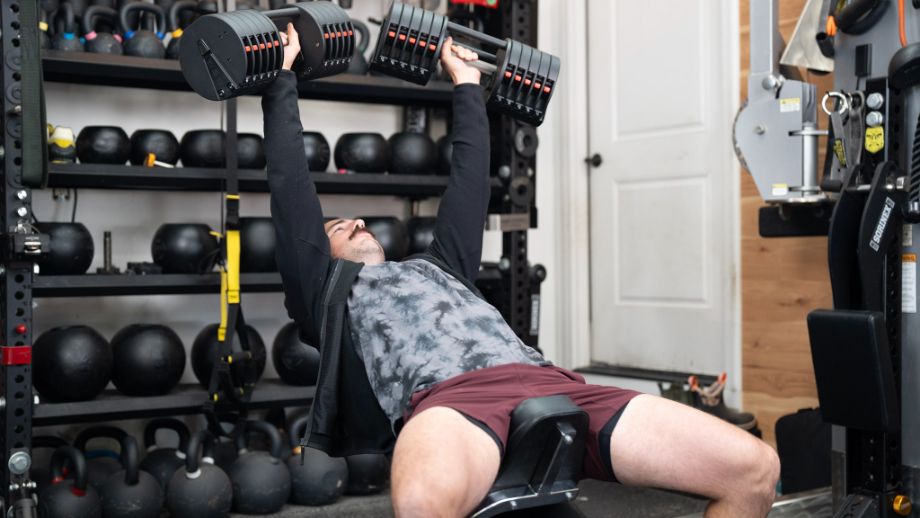
Therefore, staying in that sweet spot between 30 and 45 degrees of incline encourages greater muscle growth in your upper chest muscles.
Improved Posture
According to the American Council on Exercise3, “tight pectoral muscles contribute to a postural deviation known as forward-rounded shoulders and limit range of motion in the shoulder joint.” So, neglecting chest-strengthening exercises and stretching will contribute to poor posture.
Having great posture is about more than making a good first impression in social settings; it promotes proper alignment, which helps prevent and remedy everyday aches and pains, improving your overall health, well-being, and quality of life.
The incline barbell bench press builds muscle in the chest as well as the front deltoids, encouraging good posture and proper alignment.
RELATED: Cable Chest Workout
Common Incline Barbell Bench Press Mistakes
You’ll likely pick up the incline barbell bench press quickly if you’re well-acquainted with the standard flat bench press already, but there are still a few common mistakes to avoid.
Bouncing the Weight Off Your Chest
Do you feel like a big, bad beast in the gym when you’re blasting bench reps by bouncing the bar off your poor, bruised pectorals? Please stop.
Dropping the bar like a ton of bricks onto your sternum only to ricochet it right off is cheating the rep because you’re using momentum to move the bar rather than your own might. You’re also minimizing the amount of time the target muscle groups spend under tension, meaning you’ll build strength and muscle at a slower rate compared to true bench press repetitions.
Lower the bar slowly to your sternum to get the most from each rep. If you want to feel like a beast, explode from the bottom back to the starting position. It’s less time under tension, but exploding from the bottom has benefits.
Letting Your Wrists Collapse
Often, we let our wrists extend when getting a grip on the bar. That wrist extension carries over into the lift, placing undue stress on the wrist joint and maximizing your risk of injury.
“The correct wrist position during an incline bench press is neutral, strong, and stacked right over the elbow to maintain a perfect vertical position,” says Caine Wilkes, OLY, USAW-L1. “This position minimizes the shear forces on your wrist joint, keeping the joint relatively safe, and maximizes the amount of force you can produce when pressing the bar upward.”
RELATED: Wrist Mobility Exercises
How to Program the Incline Barbell Bench Press
The most intuitive way to insert this upper body essential into your training program is by featuring the incline barbell bench press in your chest day workout split.
Studies show you receive the most benefit from exercises that are performed first4, so, as a prime strength-building movement, the incline bench press belongs towards the front of your workout, if not the very first exercise after your warm-up.
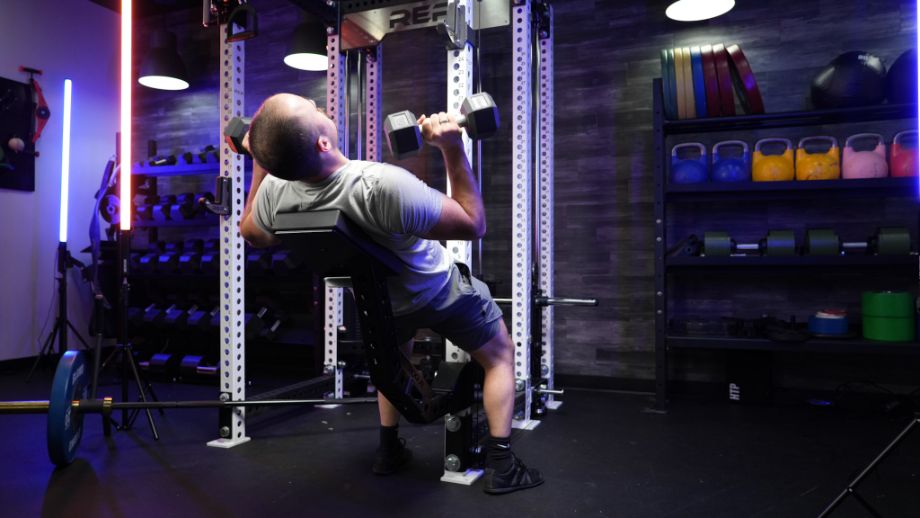
What rep scheme you choose will depend highly on your personal fitness goals:
- For strength gains: Perform 2–6 sets of 1–5 reps using heavy weight
- To build muscle: Perform 3–6 sets of 6–12 reps using moderate weight
- For endurance: Perform 2–3 sets of 12–20 reps using light weight
RELATED: How Many Reps to Build Muscle
Who Should Do the Incline Barbell Bench Press?
The incline barbell bench press makes for a valuable addition to any workout.
Athletes, especially those interested in a weightlifting, bodybuilding, or powerlifting workout, will want to include this bench press variation in their routine. The chest muscles receive a different stimulus from the incline, which helps break performance plateaus so you can continue building more upper-body strength and muscle.
Incorporating chest strength exercises in your workout routine holds value even if you’re not a professional athlete. Everyday lifters should still benefit from the increased pushing strength associated with stronger chest muscles and help improve posture.
Incline Barbell Bench Press Variations
Nothing beats the feel of a dependable barbell, but that’s not the only way to get your gains.
Incline Dumbbell Bench Press
Why do it: Using dumbbells for your bench press raises the stakes, so to speak, since you now have to stabilize two free weights instead of one. You’ll be rewarded with greater muscle activation, making the movement well worth your while for the effort put in.
How to do it:
- Set up your incline bench, grab a pair of the best dumbbells, and sit down, resting the dumbbells on your thighs.
- Push the weights into the air using your legs, steadying them over your chest.
- Lower the dumbbells towards your chest, keeping your elbows close to the body.
- Continue until your hands are next to your chest, then pause.
- Press the dumbbells back to the starting position, exhaling as you push.
- Repeat for reps.
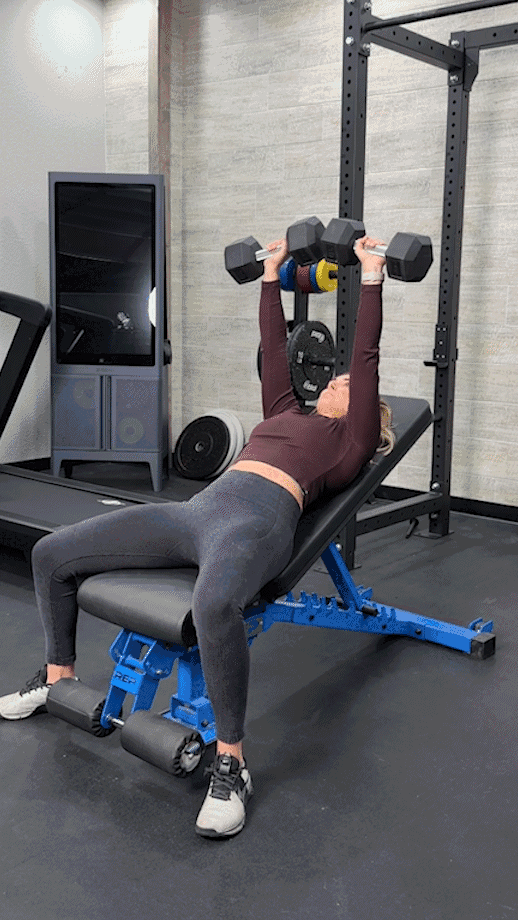
Single-Arm Dumbbell Incline Bench Press
Why do it: “Bilateral movements almost always encourage your stronger side to compensate for weakness in the other side,” says Caine Wilkes, OLY, USAW-L1. “That’s why subbing in unilateral exercises is paramount for addressing muscle imbalances and promoting even growth.”
How to do it:
- Set up your incline bench, grab a single dumbbell, and sit down.
- Hoist the weights into the starting position over your chest.
- Bend your elbow to lower the dumbbell towards your chest.
- Continue until your hand is next to your chest, then pause.
- Press the dumbbell back to the starting position.
- Repeat as needed, then switch sides and repeat the set.
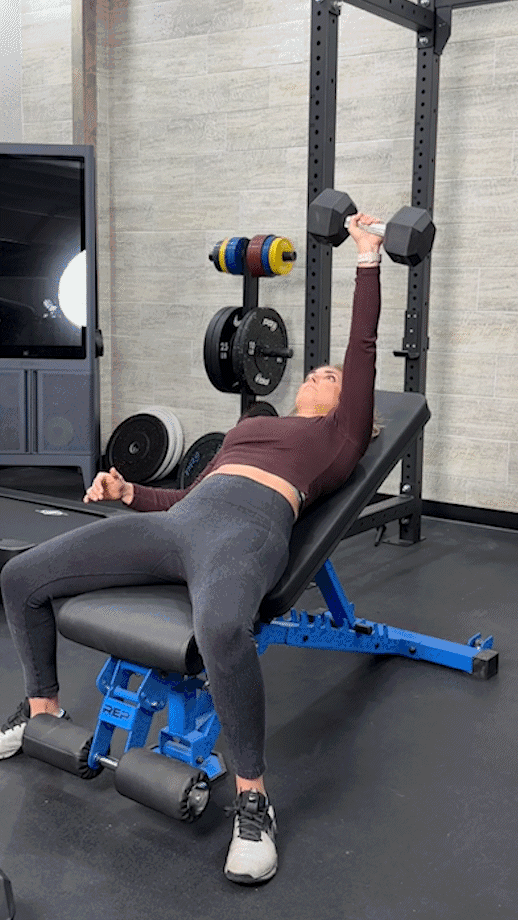
Incline Close-Grip Dumbbell Bench Press
Why do it: A 2021 study in the International Journal of Environmental Research and Public Health5 revealed that a narrow grip during the bench press exercise increased activation in the triceps brachii. So, if you’re looking to build bigger upper arms in tandem with your chest, the close-grip bench press may help.
How to do it:
- Set up your incline bench, grab a pair of the best dumbbells, and sit down.
- Push the weights into the starting position, then turn your palms so they are facing each other and touch the weights together.
- Lower the dumbbells towards your chest, lightly touching your chest at the bottom.
- Pause, then push the dumbbells back to the starting position.
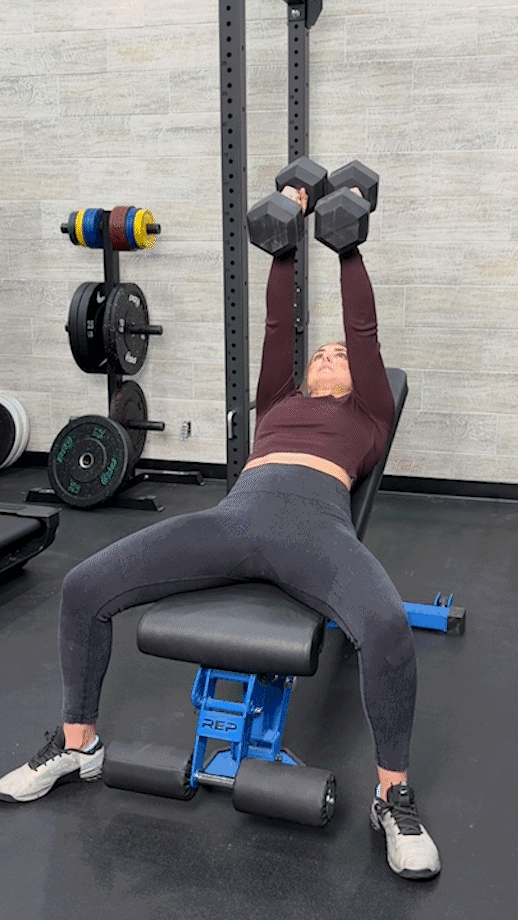
Incline Push-Up
Why do it: A 2017 study in the Journal of Exercise Science and Fitness6 found that push-ups could produce similar strength and hypertrophy gains as a low-load bench press. That’s super useful considering you don’t need any equipment whatsoever to get in a set of push-ups. Incline push-ups work the same muscles as regular push-ups but place less stress on your elbows, helping you build stronger chest muscles for other movements.
How to do it:
- Place your hands on the edge of a weight bench, table, countertop, or other sturdy surface. Your hands should be slightly wider than shoulder-width, arms extended, back straight, core tight, and feet together.
- Bend your elbows to lower your chest towards the bench.
- Pause, then push your body away from the bench until your elbows are extended.
- Repeat for reps.
RELATED: What Muscles Do Push-Ups Work?
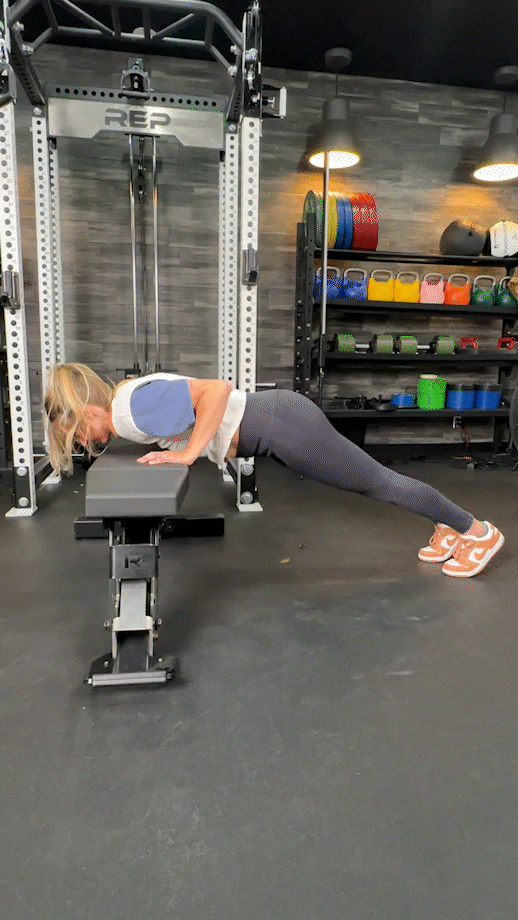
Incline Barbell Bench Press: FAQs
Is the incline bench press 30 or 45 degrees?
Anywhere between 30 and 45 degrees is optimal for the incline bench, but don’t exceed 45 degrees. After that, your incline bench starts looking more like an overhead press, and the emphasis of the exercise shifts off your chest and onto your shoulders.
Should the bar touch your chest when incline benching?
“Lightly touching the bar to your chest is a good practice during the incline bench,” says Caine Wilkes, OLY, USAW-L1, and GGR staff writer. “What you want to avoid, however, is bouncing the bar off your chest, as it encourages the use of momentum and could lead to injury if you’re overly aggressive on the bounce.”
Is incline bench press safer for your shoulders?
Many personal trainers believe the incline bench press is safer for your shoulders because the angle at which the exercise is performed is basically a midpoint between the flat bench press and the overhead press. Because of this positioning, there is less stress on the shoulder joint and rotator cuff muscles.
Can I do the incline bench press every day?
A 2017 study in Muscle & Nerve7 found that the pectoralis major and triceps brachii needed approximately 48 hours after training to return to their former glory. Performing the same exercise every day, whether it’s the incline bench press or otherwise, will only deprive your poor muscles of the recovery time they need to fully recuperate.
So, if you’re bent on building a big chest, work smarter, not harder. Wait 48 hours between chest training sessions to give your body its best chance of recovering.
RELATED: What is Active Recovery?
References
1. Krzysztofik M, Wilk M, Wojdała G, Gołaś A. Maximizing Muscle Hypertrophy: A Systematic Review of Advanced Resistance Training Techniques and Methods. Int J Environ Res Public Health. 2019;16(24):4897. Published 2019 Dec 4. doi:10.3390/ijerph16244897
2. Rodríguez-Ridao D, Antequera-Vique JA, Martín-Fuentes I, Muyor JM. Effect of Five Bench Inclinations on the Electromyographic Activity of the Pectoralis Major, Anterior Deltoid, and Triceps Brachii during the Bench Press Exercise. Int J Environ Res Public Health. 2020;17(19):7339. Published 2020 Oct 8. doi:10.3390/ijerph17197339
3. Thielen S. 5 chest stretch variations. Wondering How to Stretch Your Chest? 5 Flexibility Exercises | ACE Blog. October 27, 2023.
4. Simão R, de Salles BF, Figueiredo T, Dias I, Willardson JM. Exercise order in resistance training. Sports Med. 2012;42(3):251-265. doi:10.2165/11597240-000000000-00000
5. Saeterbakken AH, Stien N, Pedersen H, Solstad TEJ, Cumming KT, Andersen V. The Effect of Grip Width on Muscle Strength and Electromyographic Activity in Bench Press among Novice- and Resistance-Trained Men. Int J Environ Res Public Health. 2021;18(12):6444. Published 2021 Jun 14. doi:10.3390/ijerph18126444
6. Kikuchi N, Nakazato K. Low-load bench press and push-up induce similar muscle hypertrophy and strength gain. J Exerc Sci Fit. 2017;15(1):37-42. doi:10.1016/j.jesf.2017.06.003
7. Ferreira DV, Gentil P, Soares SRS, Bottaro M. Recovery of pectoralis major and triceps brachii after bench press exercise. Muscle Nerve. 2017;56(5):963-967. doi:10.1002/mus.25541
Further reading

There’s no denying the greatness of the barbell bench press, but we’re not inclined to do the same exercise every time chest day rolls around. Thankfully, there are loads of bench press variations, so you can basically have your (protein) cake and eat it, too. The incline barbell bench press is one such variation that effectively takes your tried-and-true flat bench press and puts it on an incline to increase the activation to the upper chest muscles. » Read more about: Incline Barbell Bench Press: An Essential Bench Press Variation for a Well-Rounded Chest Workout » Read more

Looking for a new vitamin D supplement? In this Garden of Life Vitamin D review, we’ll share everything you need to know about this superfood formula. Read more

This leg machine combines two of the most popular machines in commercial gyms. Check out our thoughts on it in our Titan Leg Press Hack Squat review. Read more

No matter how you toss or drop them, these slam balls can endure some wear and tear. Here are our picks for the best slam balls on the market. Read more

